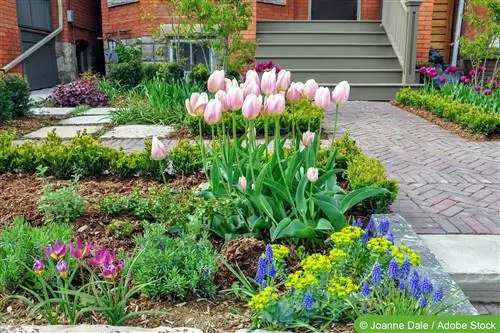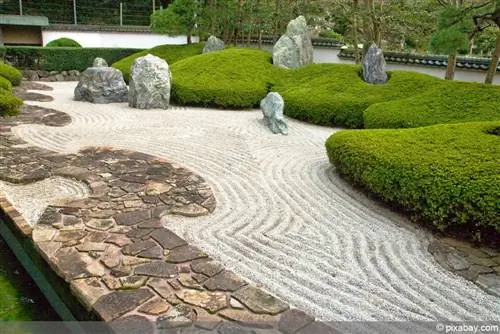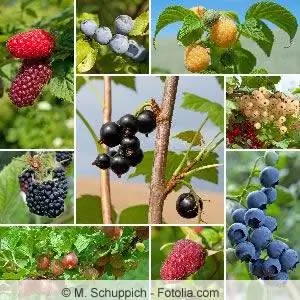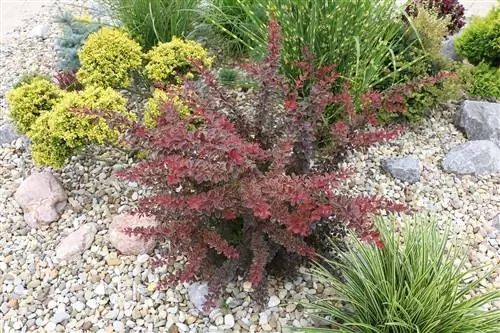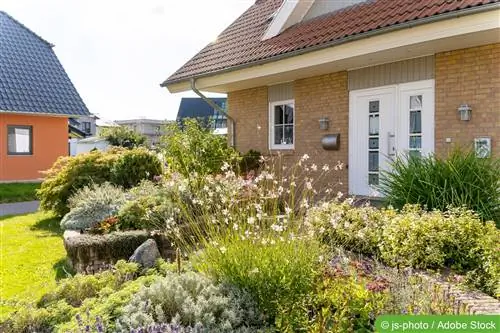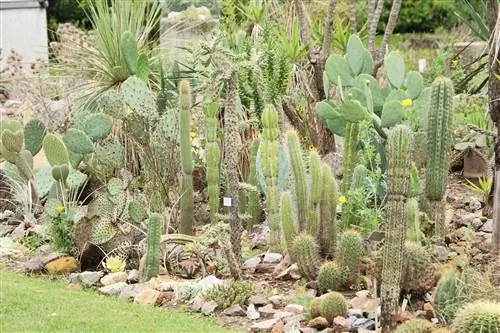- Author admin [email protected].
- Public 2023-12-17 03:39.
- Last modified 2025-01-24 12:45.
A front garden with garden gnomes is a thing of the past. Today, timeless eye-catchers are in the foreground. But what should be planted when spring beckons with the first rays of sunshine. The front garden should be beautiful and also easy to maintain. Which types of flowers are suitable? What location is the front garden in? Is it more sunny or do you need plants that prefer shade or partial shade?
Planning
At the beginning there is the question of the location of the front garden. Furthermore, the proximity to the neighbors and the architectural style of the house must be taken into account. If the house dates back to the Wilhelminian era, the garden should not appear ultra-modern. Mediterranean plants, for example, give the front garden a country style. Does the front garden offer space for appropriate seating or does the property have another garden area? It is also important to consider whether privacy protection in the form of a hedge or a fence is necessary. Below you will find a small checklist of what you should consider when planning your front garden:
- Are there parking spaces for cars or bicycles? If so, how much space must be left for this?
- Does the front yard have height differences? Do these need to be bridged? Possible options would be a dry stone wall or stairs.
- Do you want a rock garden or should the front garden do without stones?
- Is a separation of the front garden necessary? The smaller the front garden, the more you should avoid a high and closed border, as this would visually make the front garden even smaller.
- Which plants would you like to plant in your front yard? Are these suitable for sunny/shady locations?
- Please pay attention to the care required for the plants and shrubs.
- Is there a need for space for garbage cans? Can these be hidden behind a dry stone wall or is a hedge border sufficient?
Design and layout
When designing the front garden, you should think beforehand about which flowers should be planted where. A flower bed with different groups of flowers brings a variety of colors into play. If you have a small garden, you can place the bed directly behind the hedge or fence. A flower bed also looks great in the immediate vicinity of the house. Another variant is the flower bed on the side of the path. However, you should use robust flowers for this. Winding paths past the beds give the front garden that certain something.
Another aspect that you should not ignore is the location. If the front garden faces north, it is the shady side. You can reduce the darkness of the shadow with white or yellow flowers. If the garden is on the sunny side, fir trees, cypresses and small fruit trees provide pleasant shade on hot days. If the front garden faces a play street, keep in mind that children may carelessly step into the beds while playing. Choose robust plants here or, better yet, a small to medium-high fence.
Planting
Shrubs and hedges in the front garden are also a great eye-catcher. If you work on these with the hedge trimmer and create figures and shapes from them, this will enhance the visual effect. Great hedges that are suitable for the front garden are:
- laurel bushes
- Box hedges
- Hazelnut hedges
- Yew
- Western Tree of Life
- Mock cypress
Include the window sills to create a unified overall look. Flower pots or flower arrangements are decorative. Another idea could be a small water feature in the front yard in the form of a fountain. A small pond or an artificial watercourse also conjures up a wonderful atmosphere in the front garden.
If you don't want to add hedges or fences around the front garden, you could create a stone wall. A dry stone wall fits perfectly into the overall picture, looks harmonious and can be decorated with many plants. A lawn is also suitable for a garden. At this point, remember that a lawn needs a lot of attention. It has to be watered, mowed, fertilized and also scarified - this of course takes a lot of time. Flower beds offer a good alternative. Ground cover plants are wonderfully robust and require less attention. A highlight are staggered plant types, where you select low plants at the beginning and create a height stagger with other plants.
Care
Care depends on which plants you have planted in the front garden. Lawns and various types of flowers require more care than the robust ground cover or ornamental grasses. A pond or waterways also require little maintenance. Shade trees also require little time investment. Another idea is heather plants, as these also remain green all year round and are hardy.
Materials and suitable plants
The materials in the front yard are the same materials that the house is made of. If the house was built with sandstones, you can also install sandstones in the front garden. If the house is built in a more modern style, natural stones are suitable. Granite, concrete or paving stones are also suitable materials for the path or as a border around the beds.
In order to choose the right plants, the location of the garden must be taken into account. Cypress columns and rose arches are suitable. Lavender bushes and culinary herbs planted in pots attract attention. Easy-care and evergreen plants are ideal for a low-maintenance front garden. Perennials come in different colors and go perfectly with conifers, which are also considered evergreen. Ground cover and ivy prevent weeds from growing and decorate the front garden. Also pay attention to the blooming times of the flowers. When one flower begins to fade, you can enjoy the next bloom and thus extend the color accents over a wide period of time. Lilies or tulips as well as winter jasmine create beautiful colors - even in winter.
What you should know about creating a front garden in brief
With a few tips and tricks you can create your front garden easily and with little maintenance. Just be careful not to make the garden seem too crowded. With colorful accents you can give even the front garden on the north side more brightness.
- If you want to have as little work as possible with your garden, you should know the soil and light conditions in the garden and choose appropriate plants that naturally fit these conditions perfectly.
- Furthermore, you can also reduce the amount of maintenance required for a garden by designing large lawns and, last but not least, straight borders ensure that the work is kept to a minimum.
- Ground covers can then find their place in such borders, although you should never forget a weed fleece, as this means that the annoying pulling of weeds is a thing of the past.
- If you surround the borders with edging stones, you can also save yourself a lot of work, because you don't have to repeatedly pierce the edges and shape them.
Create an easy-care garden and front yard
Low-maintenance plants make the garden cozy and work unnecessary. You should make sure that you choose plants that grow as slowly as possible and make sure that as few perennials as possible are planted. These should primarily be perennials that do not have to be replanted every year, but rather those that root themselves in the ground over the long term.
- Always popular and low-maintenance are ornamental trees that do not need to be cut. The Japanese maple, the ornamental cherry or a magnolia are particularly worth mentioning here. These little trees look particularly good in the front garden and provide a beautiful look despite little work.
- There are also a whole range of shrubs that grow more beautifully the less they are treated. These include witch hazel, bell hazel and Chinese dogwood.
- The evergreen rhododendrons also make the front garden as well as the garden behind the house attractive.
- If you want to create an easy-care garden and front garden, you usually avoid roses. But that doesn't have to be the case, because the pure white Escimo variety can clean itself and therefore doesn't require any work.

